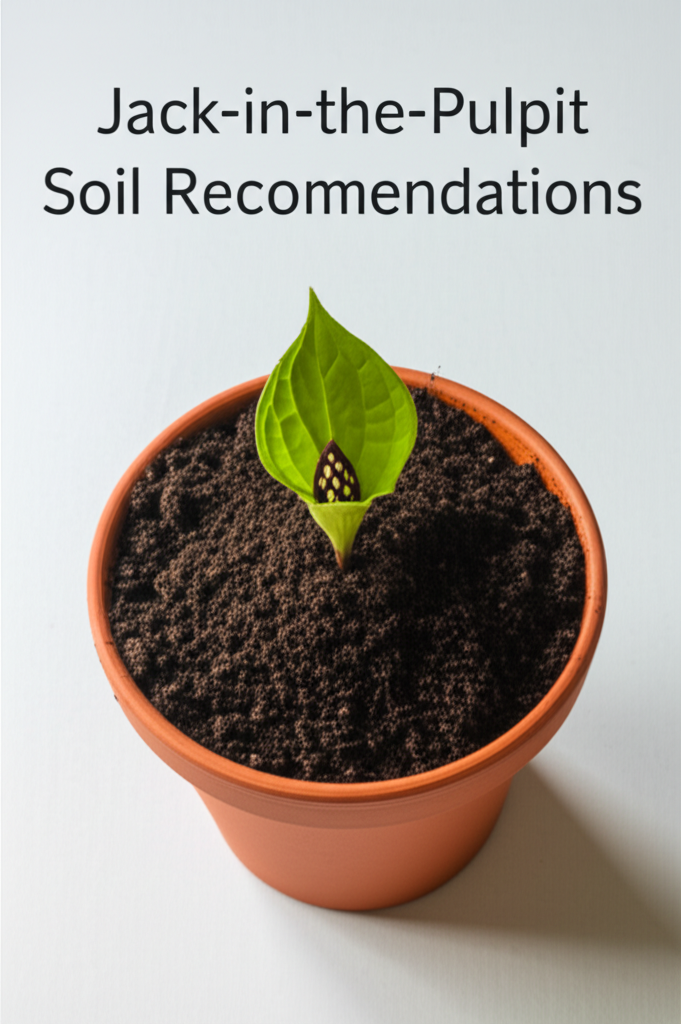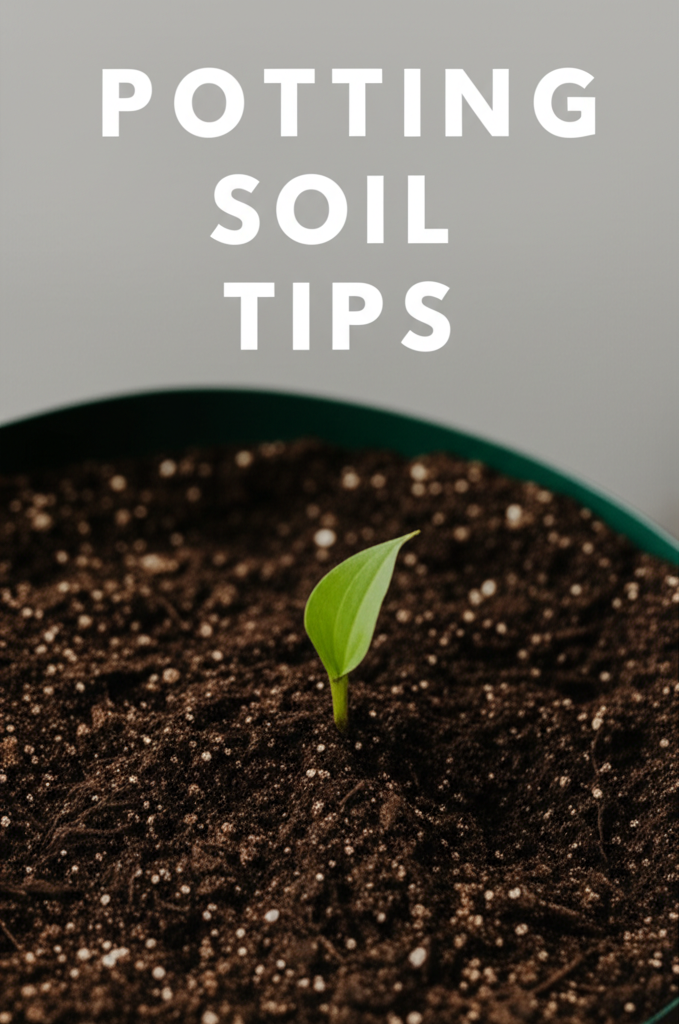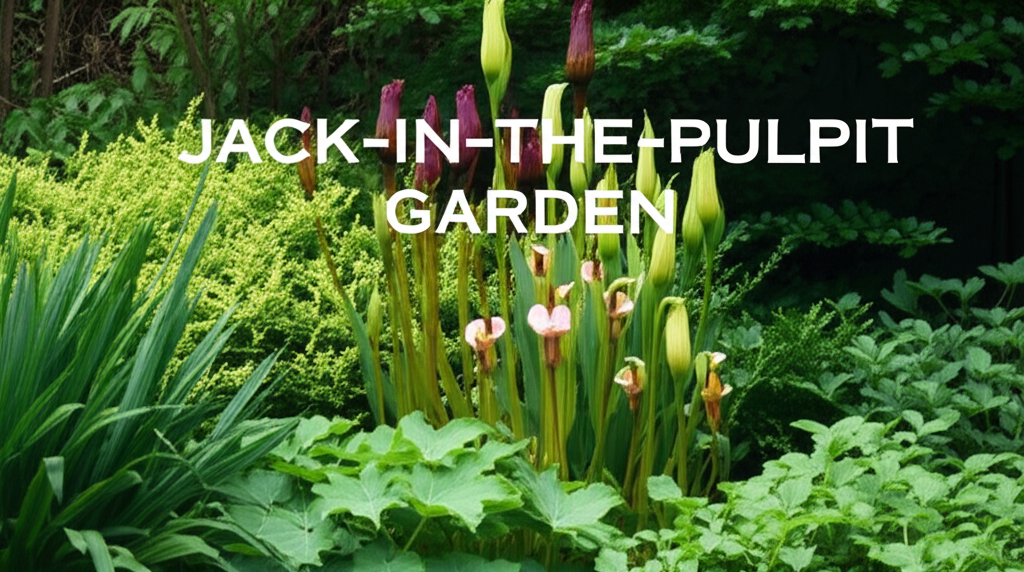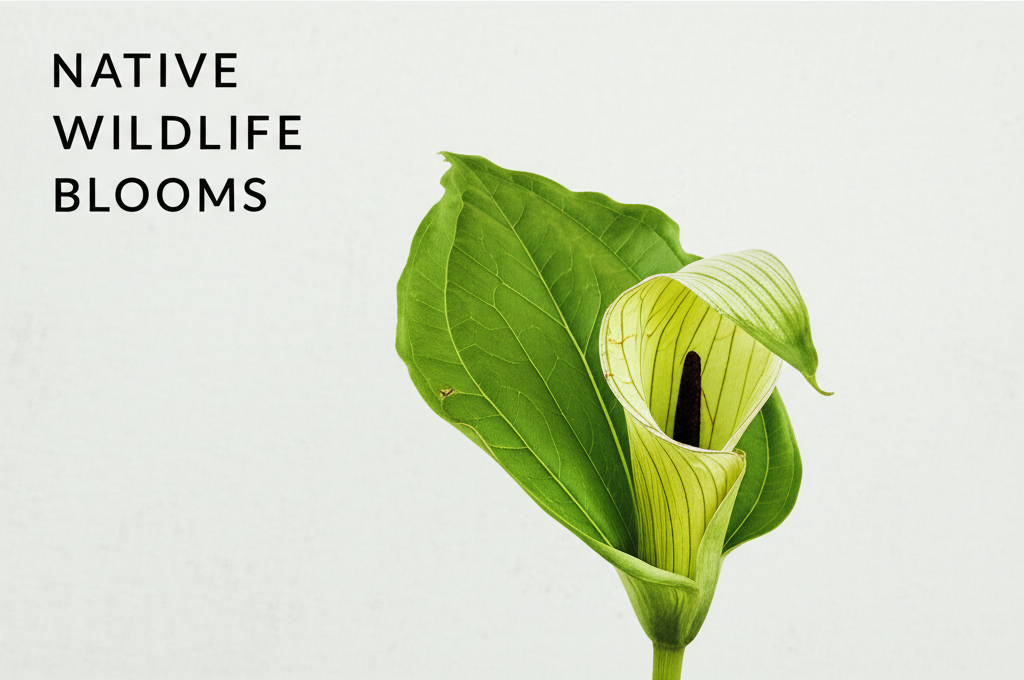Cultivating the Enigmatic Jack-in-the-Pulpit: A Container Gardener’s Soil Success Story
The Jack-in-the-Pulpit ( Arisaema triphyllum) is a captivating woodland native, instantly recognizable by its unique spathe and spadix, resembling a preacher in his pulpit. While often found gracing the dappled shade of forest floors, this fascinating perennial can be successfully grown in containers, bringing its distinctive charm to patios, balconies, and even indoor settings. However, successful container cultivation hinges on providing the right environment, and at the heart of this is the soil. Choosing the correct soil mix is paramount for replicating the Jack-in-the-Pulpit’s natural habitat and ensuring its health and vigor. This comprehensive guide will delve into the intricacies of Jack-in-the-Pulpit container planting soil, equipping you with the knowledge to foster a thriving specimen.
Understanding the Jack-in-the-Pulpit’s Natural Habitat: The Foundation of Soil Choice

To truly understand what soil the Jack-in-the-Pulpit needs in a container, we must first appreciate its native environment. In the wild, Arisaema triphyllum thrives in moist, humus-rich woodlands. It prefers dappled shade and soils that are well-draining yet retain a good amount of moisture. These soils are typically:
- Rich in organic matter: Decaying leaves, wood debris, and other natural materials contribute to a fertile and biologically active soil.
- Slightly acidic to neutral pH: While adaptable, they generally prefer a pH range of 5.5 to 7.0.
- Moist but not waterlogged: The soil should hold consistent moisture, crucial during its active growth period, but must also allow excess water to drain freely to prevent root rot.
- Loamy or silty loam texture: This texture provides a balance of aeration, drainage, and water retention.
Replicating these conditions in a pot is the key to success. A compact, dense potting mix designed for houseplants will likely be detrimental, leading to compacted roots and poor aeration.
The Ideal Container Soil Mix for Jack-in-the-Pulpit: Building the Perfect Blend
Creating a custom soil blend is often the best approach for container-grown Jack-in-the-Pulpit. This allows you to control the exact composition and tailor it to their specific needs. A good starting point involves combining several key ingredients:
1. The Base: High-Quality Potting Mix
Begin with a reputable, peat-based or coco coir-based potting mix. This will provide a good foundation for your blend. Avoid mixes that are overly heavy or contain large chunks of perlite or vermiculite, which can lead to inconsistency.
2. Enhancing Drainage and Aeration: The Crucial Element
To prevent waterlogging, which is the nemesis of Jack-in-the-Pulpit, incorporating drainage-enhancing materials is vital.
- Perlite: This volcanic glass is lightweight and creates air pockets, improving drainage and aeration. Aim for about 20-30% of your mix.
- Horticultural Grit or Coarse Sand: These materials also improve drainage and add weight to the pot, providing stability. Use in moderation, around 10-15%.
3. Boosting Moisture Retention and Nutrients: Mimicking the Forest Floor
While drainage is essential, Jack-in-the-Pulpit also needs to retain moisture. Organic matter is key to achieving this balance.
- Compost: High-quality, well-rotted compost is invaluable. It adds nutrients, improves soil structure, and helps retain moisture. Include 20-30% compost.
- Sphagnum Peat Moss or Coco Coir: These are excellent for moisture retention and providing a slightly acidic environment. They also contribute to the organic content. Aim for 20-30%.
- Leaf Mold: If available, leaf mold is a fantastic soil amendment that closely mimics the forest floor. It’s rich in nutrients and improves both drainage and water retention. Use as a significant portion of your organic amendment if possible.
A Balanced Blend Example:
Here’s a common and effective recipe for a Jack-in-the-Pulpit container soil mix:
- 1 part high-quality potting mix
- 1 part compost (well-rotted)
- 1 part perlite
- ½ part sphagnum peat moss or coco coir
Mix these components thoroughly to ensure an even distribution of ingredients.
Pre-Made Potting Mixes: Convenience vs. Customization
While creating your own mix is ideal, convenient pre-made potting mixes can be a viable option, provided you understand their limitations and how to amend them.
What to Look for in Pre-Made Mixes:
- “Woodland Mixes” or “Shade Garden Mixes”: These are often formulated with organic matter and drainage components that are more suitable for woodland plants.
- “Cactus and Succulent Mixes”: While seemingly counterintuitive, these mixes are often very well-draining due to a high proportion of perlite and sand. You can amend these by adding more compost and organic matter to increase moisture retention and nutrient content.
Amending Pre-Made Mixes:
If you opt for a pre-made mix, consider amending it with:
- Extra Compost: Boost the organic content and nutrient supply.
- Perlite: Ensure adequate drainage, especially if the mix feels too heavy.
- Sphagnum Peat Moss or Coco Coir: Improve moisture retention.
Container and Potting Considerations: Beyond the Soil
The success of your Jack-in-the-Pulpit in a pot extends beyond just the soil. The container itself plays a crucial role.
Choosing the Right Container:
- Material: Terracotta pots offer excellent breathability and help prevent overwatering, but they can dry out more quickly. Plastic or glazed ceramic pots retain more moisture. For Jack-in-the-Pulpit, a balance is often sought. A slightly porous material is generally beneficial.
- Size: Start with a pot that is only slightly larger than the corm. As the plant grows, you can repot it into a larger container. Overpotting can lead to the soil staying too wet. A general rule is to choose a pot that is 2-4 inches wider than the current root ball.
- Drainage Holes: This is non-negotiable. Ensure the pot has ample drainage holes at the bottom.
The Potting Process:
- Prepare the pot: Ensure the pot is clean and has drainage holes. You may want to place a piece of mesh over the drainage holes to prevent soil from escaping while still allowing water to drain.
- Add a layer of your soil mix: Place a generous layer of your custom or amended soil mix at the bottom of the pot.
- Position the corm: Place the Jack-in-the-Pulpit corm on top of the soil. The usual planting depth for a corm is about 3-4 inches deep, with the pointed end facing upwards if discernible. For container planting, you might plant slightly shallower, around 2-3 inches deep, to ensure good drainage.
- Fill with soil: Gently fill the rest of the pot with your soil mix, ensuring the corm is covered. Leave about an inch of space at the top of the pot for watering.
- Water thoroughly: Water the newly potted plant until water drains from the bottom.
Soil pH and its Importance for Jack-in-the-Pulpit
While Jack-in-the-Pulpit can tolerate a range of pH levels, maintaining a slightly acidic to neutral pH (5.5 to 7.0) is ideal for optimal nutrient uptake.
Testing Your Soil pH:
You can easily test your soil pH using a home soil testing kit, readily available at garden centers. This will help you determine if your chosen soil mix or amendments need adjustment.
Adjusting Soil pH:
- To lower pH (make more acidic): Add elemental sulfur or sphagnum peat moss.
- To raise pH (make more alkaline): Add dolomitic lime or wood ash, but use these sparingly as Jack-in-the-Pulpit generally prefers acidic conditions.
It’s important to make pH adjustments gradually and re-test after a few weeks.
Nutrient Needs and Fertilization in Containers
Jack-in-the-Pulpit are not heavy feeders, especially when planted in a nutrient-rich soil mix. However, in containers, nutrients can leach out over time.
When and How to Fertilize:
- Spring: A light feeding in early spring as new growth emerges is usually sufficient. Use a balanced, slow-release fertilizer or a liquid fertilizer diluted to half strength.
- Avoid over-fertilization: Too much fertilizer can burn the roots and lead to leggy, weak growth.
- Organic options: Compost tea or a top-dressing of compost can provide gentle, sustained nourishment.
Troubleshooting Common Soil-Related Issues
Even with the best intentions, some soil-related issues can arise with container-grown Jack-in-the-Pulpit.
Root Rot:
This is the most common problem and is almost always caused by overwatering and poor drainage.
- Symptoms: Yellowing leaves, wilting despite moist soil, mushy or blackened roots.
- Prevention: Use a well-draining soil mix, ensure adequate drainage holes, and avoid overwatering. Allow the top inch of soil to dry out between waterings.
- Treatment: If root rot is suspected, carefully remove the plant from the pot, trim away any rotted roots with sterile scissors, and repot in fresh, well-draining soil.
Compacted Soil:
If the soil becomes too compacted, it restricts root growth and aeration.
- Symptoms: Slowed growth, wilting, difficulty in watering (water may run off the surface).
- Prevention: Use a good mix of coarse materials like perlite and grit in your soil blend. Avoid walking on or excessively disturbing the soil surface.
- Treatment: Gently loosen the top layer of soil with a fork or skewer. If severely compacted, repotting may be necessary.
Nutrient Deficiencies:
While less common in a good mix, deficiencies can occur.
- Symptoms: Stunted growth, pale leaves, lack of flowering.
- Prevention: Regular feeding with a balanced fertilizer or compost as described above.
- Treatment: Apply a diluted liquid fertilizer or a top-dressing of compost.
Seasonal Soil Management for Container-Grown Jack-in-the-Pulpit
Proper soil management throughout the year is crucial for the long-term health of your potted Jack-in-the-Pulpit.
Spring:
- Check soil moisture and water as needed.
- Consider a light feeding if the plant is showing active new growth.
- If the plant has outgrown its pot, this is an ideal time to repot with fresh soil.
Summer:
- Maintain consistent moisture, but avoid waterlogging.
- Ensure good air circulation around the plant.
- Watch for signs of stress due to heat or drought.
Autumn:
- As the plant begins to die back, reduce watering.
- Allow the foliage to naturally yellow and wither; do not cut it back prematurely, as the plant is storing energy in its corm.
- You can top-dress the soil with a layer of compost before winter.
Winter:
- Keep the soil barely moist during dormancy.
- Protect the pot from freezing if temperatures are extreme. Wrapping the pot in burlap or placing it in a slightly more sheltered location can help.
Key Facts and Comparison of Soil Components
Understanding the function of each soil component is essential for tailoring your mix.
| Soil Component | Primary Function | Benefits for Jack-in-the-Pulpit | Considerations |
|---|---|---|---|
| Potting Mix (Peat/Coco Coir Base) | Base for structure and moisture retention | Provides essential structure, retains moisture, acts as a carrier for nutrients. | Quality varies; avoid mixes with excessive synthetic fertilizers or large, coarse perlite. |
| Perlite | Drainage and Aeration | Creates air pockets, prevents compaction, improves water drainage, reduces root rot risk. | Can be lightweight; ensure adequate soil volume to prevent tipping. |
| Horticultural Grit/Coarse Sand | Drainage and Stability | Further enhances drainage, adds weight to the pot for stability, improves soil structure. | Use in moderation to avoid making the soil too heavy or sterile. |
| Compost (Well-Rotted) | Nutrient Supply, Moisture Retention, Soil Structure | Enriches soil with organic matter and nutrients, improves water retention, fosters beneficial soil microbes. | Ensure it is fully composted to avoid introducing pathogens or weed seeds. |
| Sphagnum Peat Moss | Moisture Retention, Acidity | Excellent at holding water, helps maintain a slightly acidic pH which Jack-in-the-Pulpit prefers. | Can be slow to re-wet once dry. Peat harvesting has environmental concerns; coco coir is a sustainable alternative. |
| Coco Coir | Moisture Retention, Aeration | Good moisture retention, improves aeration, sustainable alternative to peat moss, generally neutral pH. | May need to be supplemented with a calcium-magnesium fertilizer as it can sometimes bind these nutrients. |
| Leaf Mold | Nutrient Supply, Soil Structure, Moisture Retention | Mimics natural forest floor conditions, highly beneficial for soil health and plant growth. | Can be harder to source commercially but is an excellent amendment if available. |
Steps to Success and Pros/Cons of Custom Soil Blends
Here’s a breakdown of the process and the advantages and disadvantages of creating your own soil mix for Jack-in-the-Pulpit.
| Steps to Success | Pros of Custom Soil Blend | Cons of Custom Soil Blend |
|---|---|---|
| 1. Assess your ingredients: Gather your chosen components (potting mix, compost, perlite, etc.). | Tailored Nutrition: You can precisely control the nutrient levels, avoiding over-fertilization. | Time and Effort: Requires more time and effort to source and mix ingredients. |
| 2. Measure and Mix: Combine ingredients in the recommended ratios. | Optimized Drainage: Ensures excellent drainage to prevent root rot, a common issue. | Initial Cost: Purchasing individual components can sometimes be more expensive upfront than buying a single bag of potting mix. |
| 3. Prepare the Pot: Ensure it has adequate drainage holes. | Improved Aeration: Promotes healthy root development by allowing oxygen to reach the roots. | Potential for Error: Incorrect ratios can lead to suboptimal results if not mixed carefully. |
| 4. Pot the Corm: Plant the corm at the correct depth. | Mimics Natural Habitat: Replicates the conditions the plant thrives in, leading to healthier plants. | Requires Knowledge: Understanding plant needs is necessary to create an effective blend. |
| 5. Water and Observe: Water thoroughly and monitor for signs of stress or overwatering. | Better Long-Term Health: Custom blends often lead to more robust and disease-resistant plants over time. | Storage: Unused mixed soil needs to be stored properly to prevent contamination or degradation. |
| 6. Fertilize Appropriately: Feed lightly in spring if needed. | Cost-Effective for Multiple Plants: If you grow many plants, making your own mix in bulk can be more economical. | Consistency: Ensuring consistent quality of individual ingredients can be challenging. |
| 7. Repot as Necessary: As the plant grows, repot into a slightly larger container with fresh soil. | Adaptability: You can adjust the blend for different plants or changing environmental conditions. | Experimentation: May require some experimentation to find the perfect blend for your specific climate and conditions. |
Conclusion: The Foundation for a Flourishing Jack-in-the-Pulpit
Successfully growing Jack-in-the-Pulpit in containers is an achievable and rewarding endeavor. By understanding their natural inclination towards moist, humus-rich, and well-draining soil, you can confidently create or amend potting mixes that will foster a healthy and vibrant plant. Prioritize drainage, incorporate ample organic matter, and manage moisture levels judiciously. With the right soil as your foundation, your enigmatic Jack-in-the-Pulpit will grace your container garden with its unique and captivating presence for years to come. Happy planting!


